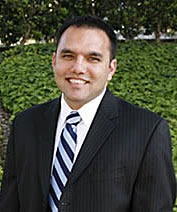Endocrine Disrupting Chemicals > Endocrine Disrupting Chemicals in Consumer Products
Endocrine Disrupting Chemicals in Consumer Products is a three-part series of interactive, self-paced eLearning modules. The goal of this series is to enhance the knowledge of physicians and other healthcare providers about endocrine disrupting chemicals (EDCs) including populations who may be vulnerable to exposure, identification of EDCs in consumer products, potential health effects of exposure, and exposure prevention strategies. By enhancing their knowledge, physicians and other healthcare providers can better assess patients who may be exposed to EDCs in consumer products. This series includes the following courses:
Endocrine Disrupting Chemicals in Consumer Products: Introduction
- Define endocrine disrupting chemicals (EDCs)
- Identify critical periods of life when humans are most vulnerable to EDCs
Endocrine Disrupting Chemicals in Consumer Products: Identification and Health Effects
- Identify consumer products that have been found to contain EDCs
- Describe the health effects of EDCs commonly found in consumer products
Endocrine Disrupting Chemicals in Consumer Products: Prevention
- Recognize prevention strategies to minimize EDC exposure in vulnerable populations
- Apply prevention strategies and risk communication to a patient scenario
Developed By
 Timur Durrani, MD, MPH
Timur Durrani, MD, MPH
Medical Director, Health Services, Lawrence National Laboratory, Berkeley, CA
Pediatric Environmental Health Specialty Units, Region 9
Dr. Durrani an Associate Clinical Professor of Medicine at the University of California San Francisco, where he holds appointments in the Department of Medicine, Division of Occupational and Environmental Medicine and Department of Family Medicine. Dr. Durrani earned his Medical Degree from the University of Arizona, where he also earned his Master of Public Health. He holds quadruple board certifications in Family Medicine, Preventive Medicine, Occupational Medicine and Medical Toxicology. His academic responsibilities include teaching medical and pharmacy students, as well as graduate medical trainees including Emergency Medicine, Occupational and Environmental Medicine residents, and Medical Toxicology Fellows. As a consultant for the Medical Toxicology Service, he provides clinical care for acutely poisoned patients at the San Francisco General Hospital, as well as outpatient Medical Toxicology consultations through the UCSF Occupational and Environmental Medicine Faculty Practice. He serves as Medical Toxicology consultant for the Agency for Toxic Substances and Disease Registry, Region 9, and the Environmental Protection Agency, Region 9. Dr. Durrani has publications in basic science and public health disciplines, and has presented abstracts in neurotoxicology.
 Katelyn Wong
Katelyn Wong
University of Connecticut School of Medicine
Pediatric Environmental Health Specialty Unit, Region 9
Katelyn is currently a third-year medical student with prior experience with literature review and research previously in undergraduate studies and medical school
Acknowledgement: The U.S. Environmental Protection Agency (EPA) supports the PEHSU by providing partial funding to ATSDR under Inter-Agency Agreement number DW-75-95877701. Neither EPA nor ATSDR endorse the purchase of any commercial products or services mentioned in PEHSU publications.







